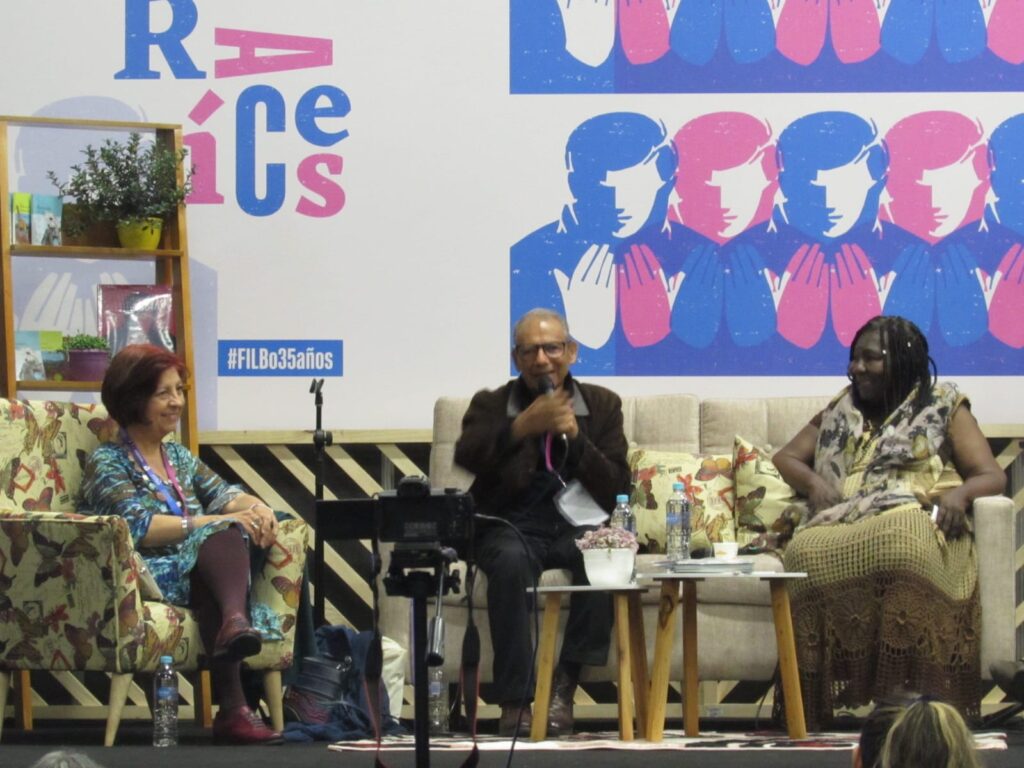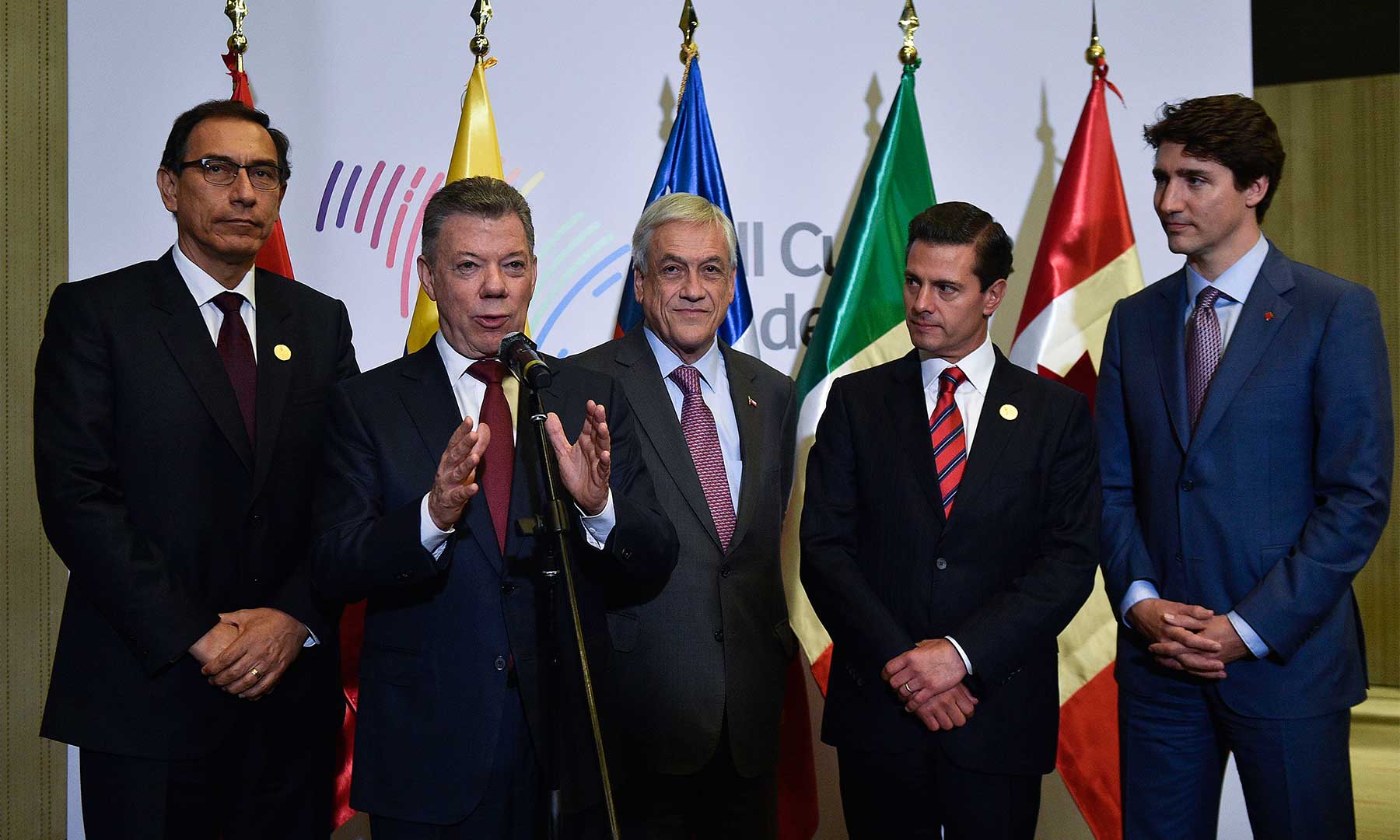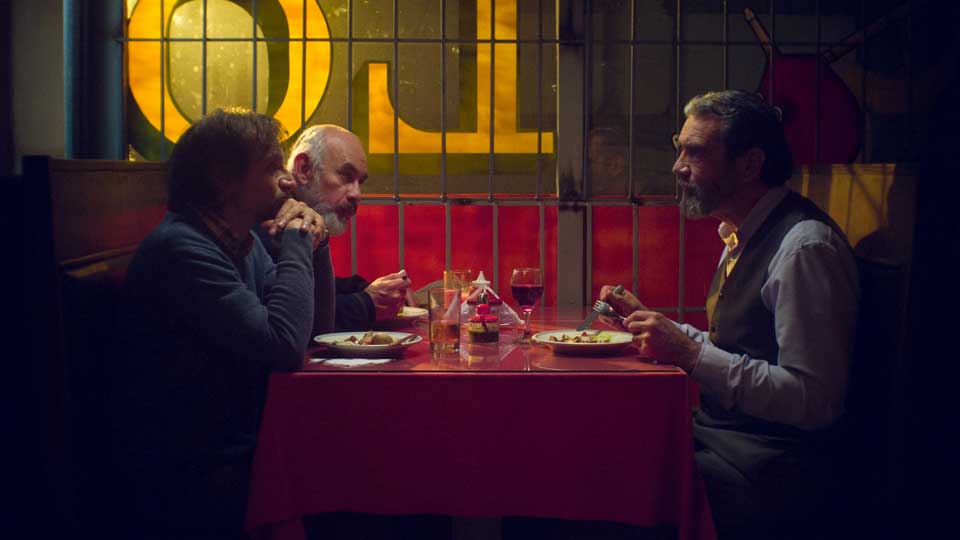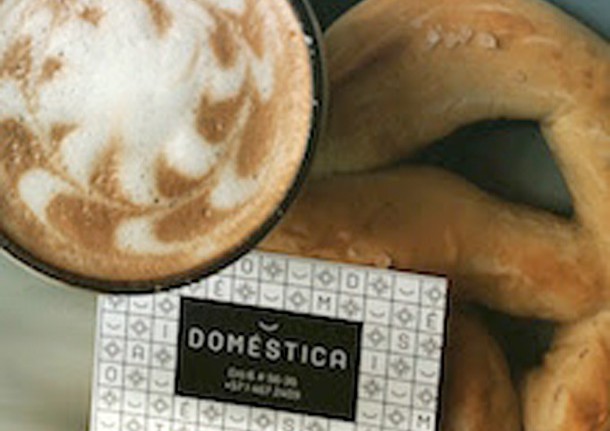Oral tradition and Indigenous mythology take centre stage in the final week of FILBo 2023.

Just as the crowd are preparing to file out of the auditorium, Mary Grueso hurls herself into a rousing recitation of her poem ‘La muñeca negra’. The performance is an unexpected gift, occasioned by the request of a fan in the front row and the audience is thrilled.
Grueso’s voice pitches with alternating waves of frustration, melancholia, nostalgia and rage as she relates her childhood experience as a member of an under-represented community, but not a syllable is lost amidst the emotion.
It is a masterclass in the art of oral narration; a tradition passed down to Grueso from generations of Pacific coast cuentistas. It is also a perfect realisation of what she and two other writers have been invited to FILBo 2023 to discuss: the enduring power and relevance of Afro-Colombian and Indigenous literary traditions.
Grueso is a poet, storyteller and educator from Guapi, Cauca, celebrated in Colombia for her role in raising the profile of Afro-Colombian literary traditions. She is joined around the “fuego imaginario” in FILBo’s Raíces Sala by Ana Alcolea, a Spanish children’s writer who is well-known for works that draw on Latin-American myth and legend. Sitting between the two women is Colombian cultural ambassador Celso Román who has just released a book inspired by the folklore of Indigenous groups in the Amazons.
From the spoken to the written word
Oral storytelling has a long history, especially within Indigenous and Afro-Colombian cultures. Recognition of this heritage and the enduring importance of the spoken word proves a shared value that successfully unites the three very different writers on stage.
Grueso speaks of the cuentistas of her community growing up. Ramon recalls the legends told to him and his nine siblings by his mother and the myths he encountered through his work in Choco and Guijara. Alcolea tells of her first encounters with Latin American oral tradition through The Popol Vuh and the song-like poems of Pablo Neruda. None of the three can resist taking on the role of story-teller themselves, offering unprompted retellings of their favourite traditional tales throughout the hour-long discussion.
It is clear Grueso, a spoken-word artist herself, has the strongest emotional link with la oralidad. She describes it as a “fundamental” part of Afro-Colombian culture and also the means by which it has survived.
“Oral tradition has been [our] vertebral column”, she tells the audience. “We didn’t used to write, we didn’t know how to read, but oralidad has been our point of reference and through [it] we have protected our traditions that come from Africa.”
Far from seeing the written word as a threat to oral tradition, she sees it as an opportunity to preserve and protect the stories of her community. “We are moving from oralidad to writing because we didn’t have this possibility before,” she says. “We are not leaving oralidad behind, instead we have taken it into account, and we are making a bridge between oralidad and literature. Today we write many things, but we still have oralidad as our point of departure.”
This is a sentiment echoed by the other two panellists. Literature is not stagnant, it is ever evolving and the shifting dynamics between the written and spoken word are part of that process. “I have come to the conclusion that literature is alive,” Ramon reflects.
The power of representation
Whilst respect for oral tradition may be a shared trait among the trio, each have their personal reasonings. For Grueso, drawing on the influences of cuentistas from the Pacific coast and blending them with the contemporary experiences of community, allows her to offer the cultural representation she never experienced as a child.
“I started to write children’s literature because when I was studying the education system, the ministry for education didn’t take us into account,” Grueso says. “We were in the classroom, but we weren’t because nothing that related to us appeared there. It was an education that wasn’t pertinent to us.”
By using traditional Pacific coast literary forms like arrullos within her work as a storyteller and as a teacher, Grueso has found new ways to bring topics related to race into the classroom and promote greater appreciation of oral traditions and the communities they come from.
Storytelling is essentially human
Alcocea’s sees the incorporation of elements of Indigenous story-telling tradition in her children’s books as a way of tapping into the shared human experience. “What fascinates me greatly are the similarities that exist between Indigenous cultures and western cultures”, she explains. “There are perceptions of nature, of cosmology that match up because in all cases we’re talking about the essence of being human, attempting to explain the inexplicable”.
To illustrate her point she outlines four literary tropes common to cultures across Latin America and indeed the world:
- Rain as a form of punishment for humanity
- Metamorphoses of humans and animals
- Weaving and tapestries as a form of female narrative
- Dreams as a gateway between spiritual realms
Her recent mythology-inspired work, Por los caminos del sueño draws on the latter two of these universal themes, centring around a paralysed girl who enters a dream world each night through a portal in a mota-like tapestry on her wall.
When focusing on the theme of metamorphoses she expresses the idea that the trope reveals the truth that we “are related, we share mother earth, we make up a whole.” This could also be said of her interest in finding points of commonality between different cultures, by using her work to bring Indigenous mythologies to a wider community of readers and reflect on universal themes she is able to speak to the essential shared human experiences.
A natural tradition
Celso Román’s fascination in Indigenous story-telling comes from his work with communities in Choco, Guijara and the Amazons and his love for the environment. For him Indigenous literary traditions highlight a connection with nature that is needed now more than ever.
“There is a force in nature, a magical relationship with nature that unfortunately … we are losing,” he explains. He becomes more and more animated as he explains the reverence with which different Indigenous groups regard nature, for example launching into an explanation of how one community in the Amazon ask for forgiveness from a tree when they have to chop it down to make a canoe and grieve it for days afterwards.
He looks to Indigenous cultures and their continued veneration of nature as an example for all of humanity, and explains that this respect comes through in their literary traditions. His latest children’s book, El espíritu del páramo, centres around the dynamics between a European gold prospector and his local guide. He blends elements of Indigenous mythology with passionate descriptions of pumas, frailejones, spectacled bears and other Colombian plants and animals to encourage a similar respect for nature in his child readers.
Román is determined to uphold the legacy of Indigenous cultures and their relationship with the earth through his writing. As he puts it “We Colombians have an enormous cultural richness that we have to regain through literature and educational spaces”.
Fancy diving further into the rich world of Indigenous and Afro-Colombian literature? Here are two great places to start:
- Biblioteca de Literatura Afrocolombiana and Biblioteca Básica de los Pueblos Indígenas de Colombia. Two online literary collections released in 2010 by the Ministry for Culture that that offer an introduction to some of the most celebrated authors and myths and legends from both groups
- Territorios Narrados. A collection of books of stories and legends from Indigenous and Afro-Colombian communities created by the Ministry of National Education to promote the cultural conservation





